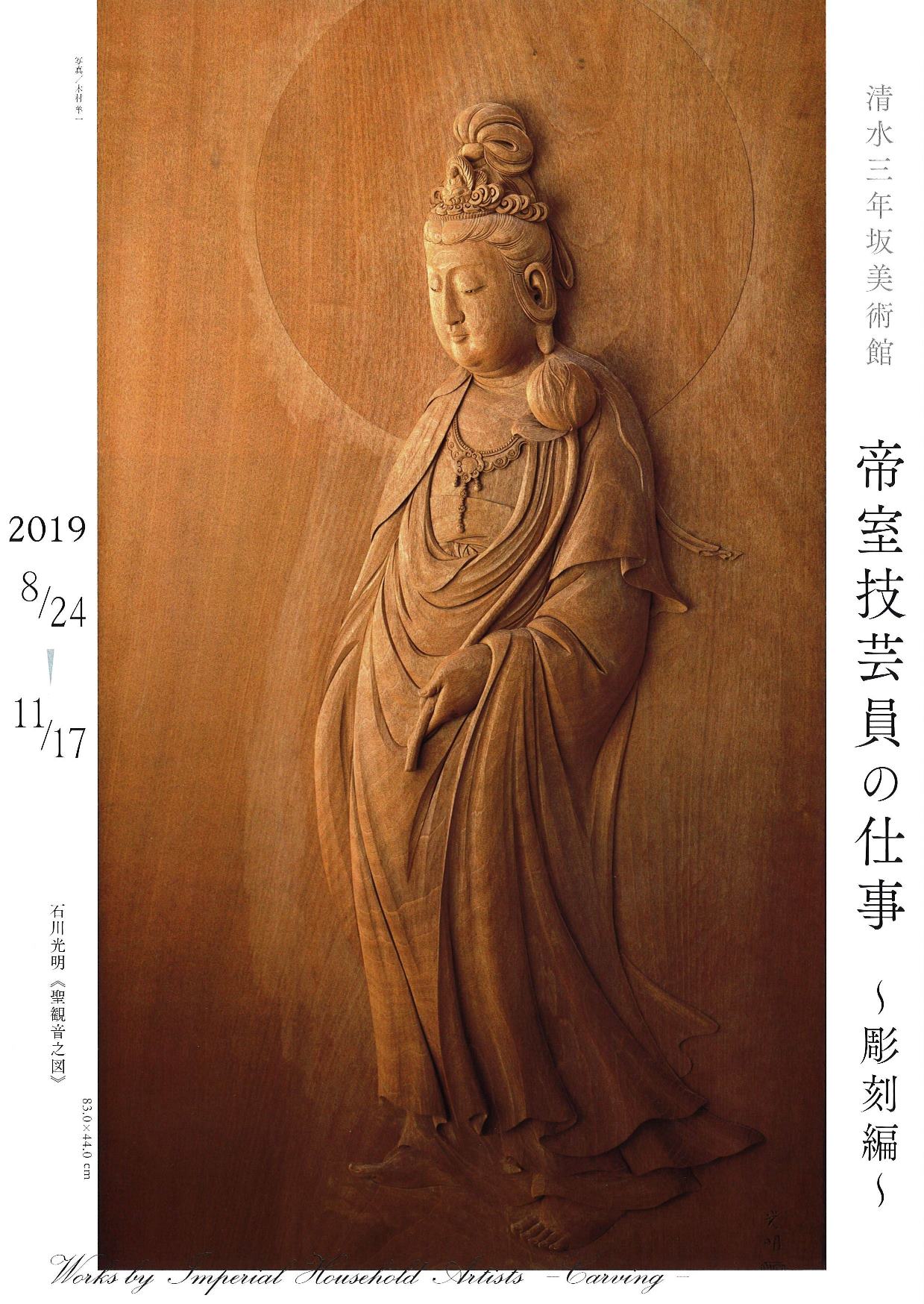Works by Imperial Household Artists – Carving –
- Genre:
-


- Category:
-

In our continuing concentration on the work of Imperial Household Artists, this exhibit focuses on carving produced by Ishikawa Komei/Mitsuaki (1852~1913), Takamura Koun (1852~1934), as well as others.
In the period between the Meiji era and the beginning of WWII, the Imperial Household Artist system, which had been created by the Imperial Household Ministry (the present-day Imperial Household Agency), appointed artistic craftsmen who possessed both skill and upstanding character as Imperial Household Artists and thereby made their merits known to the public. At the same time as the system conferred honor upon these artists, it also brought about the further evolution of these traditional decorative arts by requisitioning artworks from them and spurring them to elaborate upon their craft.
The collapse of the feudal order with the coming of Meiji left temple relief carvers and Buddhist image carvers with lowered demand for their services, and their precarious position was further endangered by the historical movement to promote state Shinto and unseat Buddhism within Japanese culture. It was at this point that the government-supported drive to find new export markets for Japanese artistic handicrafts led to the creation of decorative ornaments and craftsmanship to match Western tastes. At the same time, the concept of sculpture flowed into Japan from the West and created in this transitional period a completely changed environment within which these craftsmen lived and worked.
Ishikawa Komei was born into a family of temple relief carvers and learned ivory carving from a netsuke master. In the early years of the Meiji era’s second decade, ivory round carving from a whole section of an elephant tusk became the star export item of domestic expositions, and Komei’s reputation for carved ivory artworks arose early and spread. Takamura Koun, who trained as a Buddhist image carver, realized that the popularity of ivory carving and anti-Buddhist sentiment meant that woodcarvers’ fortunes were not likely to flourish; nevertheless, he still made his way through life solely as a sculptor in wood. He involved himself as well in the training of later generations of wood sculptors, and a number of sculptors were produced under his tutelage.
In the present exhibition, to the works of Koun and Komei have been added those of Takenouchi Hisakazu/Kyuichi (1857-1916), who transitioned to wood sculpture from ivory carving because deeply impressed by ancient wooden Buddhist images and later served as a professor of the art at the Tokyo Fine Arts School (present-day Department of Fine Art, Tokyo University of the Arts), and Yamazaki Choun (1867~1954), who pioneered a new kind of Japanese artistic expression by melding Western sculptural techniques with those of traditional Japanese wood carving. We hope you enjoy this exhibition and the view it gives of the development of the age through the elegant and powerfully rendered artworks of these Imperial Household Artists, who engaged in a single-minded pursuit of their craft.
| Date / Term | August 24, 2019 (Sat.) - November 17, 2019 (Sun.) *except for National Holidays on Monday or Tuesday |
|---|---|
| Venue |
[Higashiyama-ku] 3-337-1 kiyomizu sanneizaka kita-iru kiyomizudera-monzen *From Kyoto Station, take the Number 206 or 100 buses. |
| Admission |
Adults: JPY 800 University, senior high school, and Junior high school student: JPY 500 Elementary school student: JPY 300 Children under elementary school age: Free |
| URL | http://www.sannenzaka-museum.co.jp/index_e.html |
| Organizer | Kiyomizu sannenzaka museum |
| Contact | Tel:075-532-4270 Fax:075-532-4271 E-mail:info@sannenzaka-museum.co.jp |
*For more information, please contact the each organizer.

